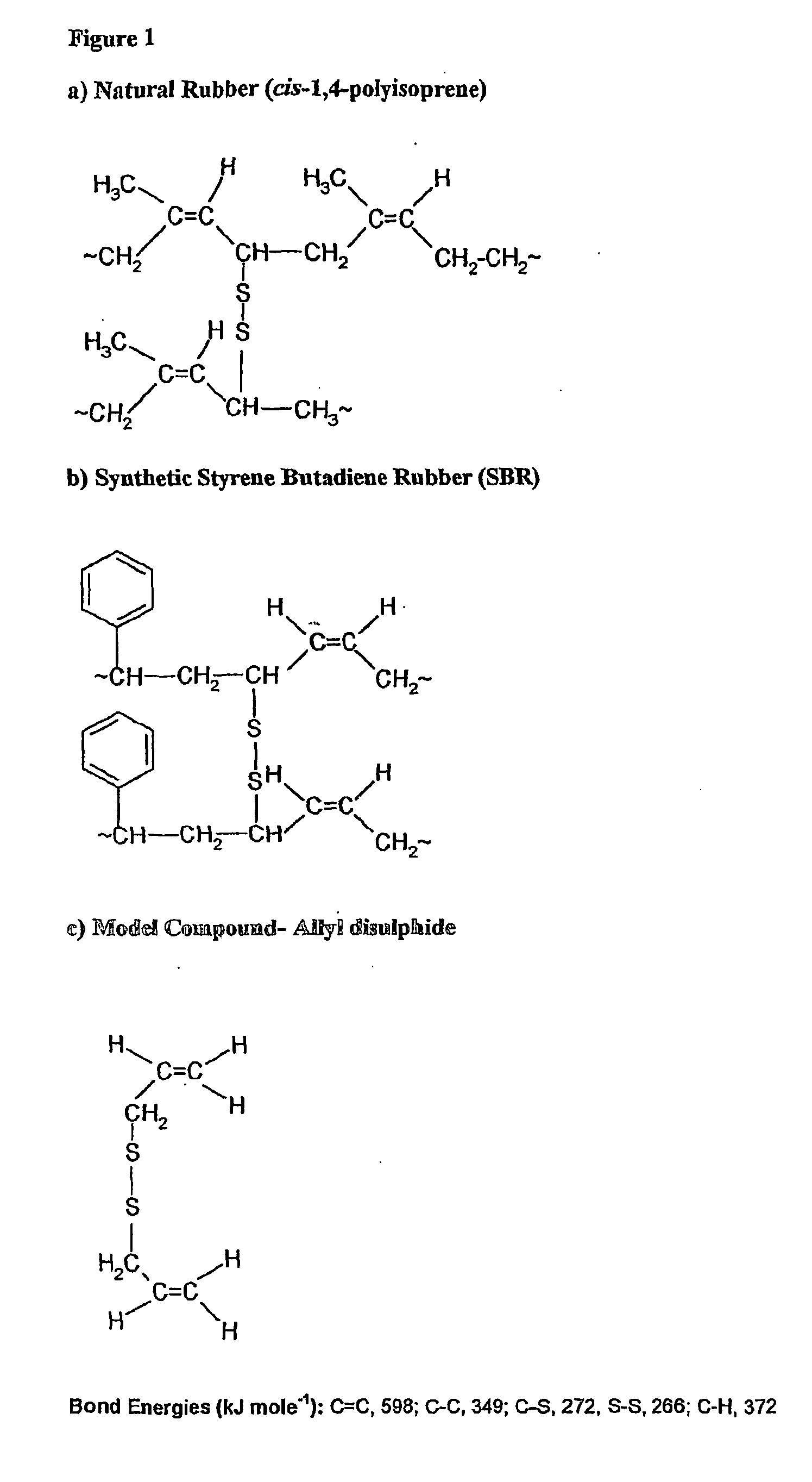Rubber treatment method
a treatment method and rubber technology, applied in the field of rubber treatment method, can solve the problems of waste rubber materials, vehicle tyres, unsuitable for easy processing, and a significant environmental problem, and achieve the effect of efficient devulcanisation of waste rubber products and higher quality
- Summary
- Abstract
- Description
- Claims
- Application Information
AI Technical Summary
Benefits of technology
Problems solved by technology
Method used
Image
Examples
example 1
[0038] Example 1
[0039] 50 g of 12 mesh rubber crumb derived from truck tyres was rotated in a horizontal cylindrical vessel with 100 cm3 of aqueous medium containing essential minerals, between 0.1 and 3 cm3 of hexadecane and 500 μl innoculum of a late logarithmic growth phase culture of Gordonia desulfuricans (NCIMB 40816) grown in a similar medium supplemented with benzothiophene as a sulphur source.
[0040] Typical aqueous medium composition in gdm−3 [0041] Na2HPO4 4.33 g, KH2PO4 2.65 g, NH4Cl 2 g, [0042] MgCl2.6H2O 0.64 g, CaCl2.2H2O 33 mg, ZnCl2 2.6 mg, [0043] FeCl2.4H2O 2.6 mg, EDTA 1.25 mg, MnCl2.4H2O 1 mg, CuCl2.2H2O 0.15 mg, [0044] Co(NO3)2.6H2O 0.125 mg, [0045] Na2B4O7.10H2O 0.1 mg, (NH4)6Mo7O24.4H2O 0.09 mg.
[0046] The medium was changed when maximum growth of the bacteria was observed. This change could be repeated several times. The percentage reduction of total sulphur content in the rubber samples after treatment varied between 23% and 35%.
[0047] When blended with vir...
example 2
[0050] Example 2
[0051] The same process was carried out as in Example 1 but with hexadecane is replaced by glycerol. In contrast to example 1 when hexadecane is replaced by glycerol as a carbon support there is no significant reduction in the total sulphur content of the rubber.
example 3
[0052] Example 3
[0053] The same process was carried out as in Example 1 but with Gordonia desulfuricans replaced by a Rhodococcus erythropolis strain DT10. In contrast to example 1, the reduction in total sulphur content of the rubber was substantially lower at 13%.
PUM
| Property | Measurement | Unit |
|---|---|---|
| temperature | aaaaa | aaaaa |
| temperature | aaaaa | aaaaa |
| sizes | aaaaa | aaaaa |
Abstract
Description
Claims
Application Information
 Login to View More
Login to View More - R&D
- Intellectual Property
- Life Sciences
- Materials
- Tech Scout
- Unparalleled Data Quality
- Higher Quality Content
- 60% Fewer Hallucinations
Browse by: Latest US Patents, China's latest patents, Technical Efficacy Thesaurus, Application Domain, Technology Topic, Popular Technical Reports.
© 2025 PatSnap. All rights reserved.Legal|Privacy policy|Modern Slavery Act Transparency Statement|Sitemap|About US| Contact US: help@patsnap.com

